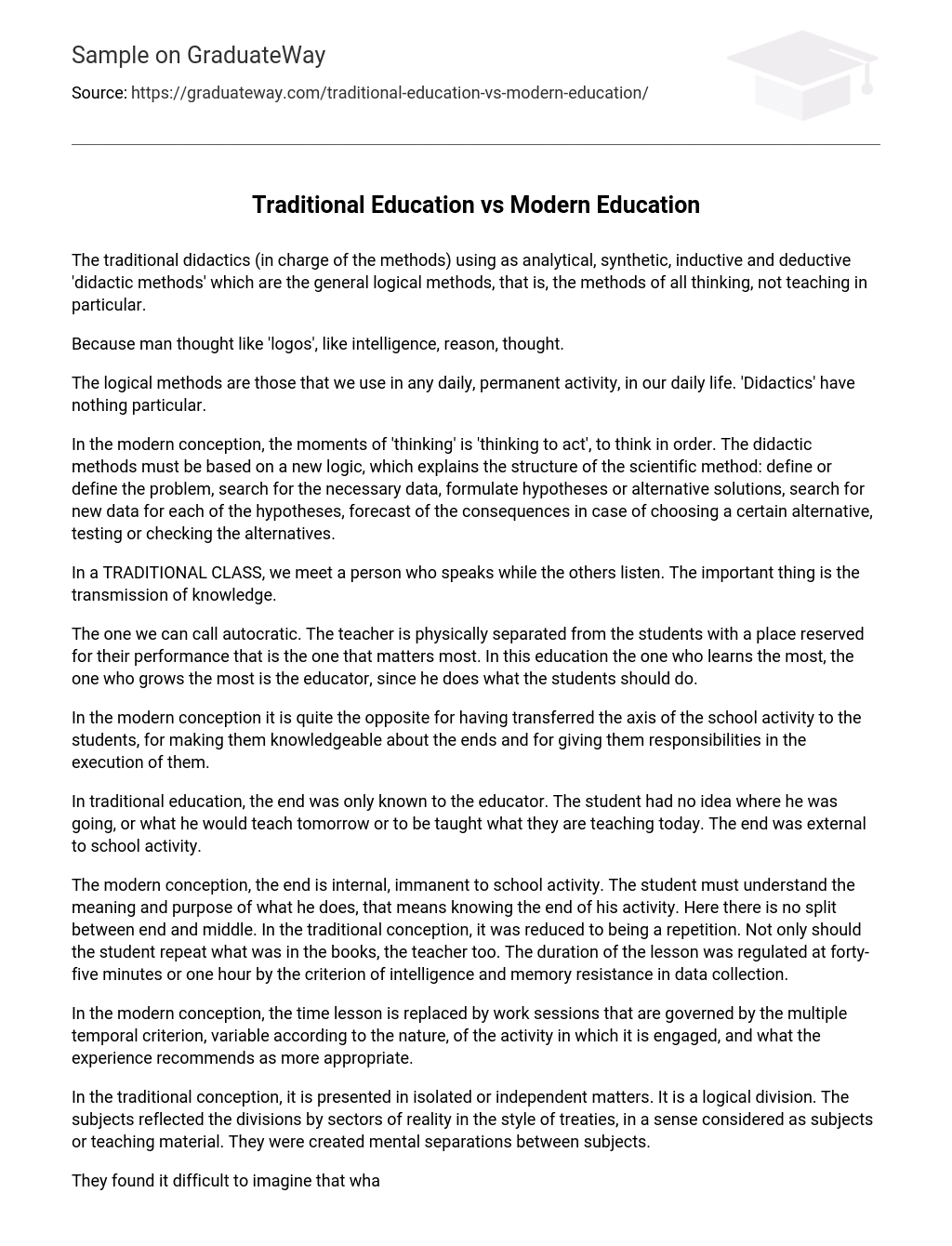The traditional didactics (in charge of the methods) using as analytical, synthetic, inductive and deductive ‘didactic methods’ which are the general logical methods, that is, the methods of all thinking, not teaching in particular.
Because man thought like ‘logos’, like intelligence, reason, thought.
The logical methods are those that we use in any daily, permanent activity, in our daily life. ‘Didactics’ have nothing particular.
In the modern conception, the moments of ‘thinking’ is ‘thinking to act’, to think in order. The didactic methods must be based on a new logic, which explains the structure of the scientific method: define or define the problem, search for the necessary data, formulate hypotheses or alternative solutions, search for new data for each of the hypotheses, forecast of the consequences in case of choosing a certain alternative, testing or checking the alternatives.
In a TRADITIONAL CLASS, we meet a person who speaks while the others listen. The important thing is the transmission of knowledge.
The one we can call autocratic. The teacher is physically separated from the students with a place reserved for their performance that is the one that matters most. In this education the one who learns the most, the one who grows the most is the educator, since he does what the students should do.
In the modern conception it is quite the opposite for having transferred the axis of the school activity to the students, for making them knowledgeable about the ends and for giving them responsibilities in the execution of them.
In traditional education, the end was only known to the educator. The student had no idea where he was going, or what he would teach tomorrow or to be taught what they are teaching today. The end was external to school activity.
The modern conception, the end is internal, immanent to school activity. The student must understand the meaning and purpose of what he does, that means knowing the end of his activity. Here there is no split between end and middle. In the traditional conception, it was reduced to being a repetition. Not only should the student repeat what was in the books, the teacher too. The duration of the lesson was regulated at forty-five minutes or one hour by the criterion of intelligence and memory resistance in data collection.
In the modern conception, the time lesson is replaced by work sessions that are governed by the multiple temporal criterion, variable according to the nature, of the activity in which it is engaged, and what the experience recommends as more appropriate.
In the traditional conception, it is presented in isolated or independent matters. It is a logical division. The subjects reflected the divisions by sectors of reality in the style of treaties, in a sense considered as subjects or teaching material. They were created mental separations between subjects.
They found it difficult to imagine that what they learned in one subject could have some relationship with the other, since reality was given to them by fragments or different parts.
Time was divided into hours and at that time such matter taking into account that no very strong materials were placed together due to the fatigue of intelligence or fatigue of memory.





